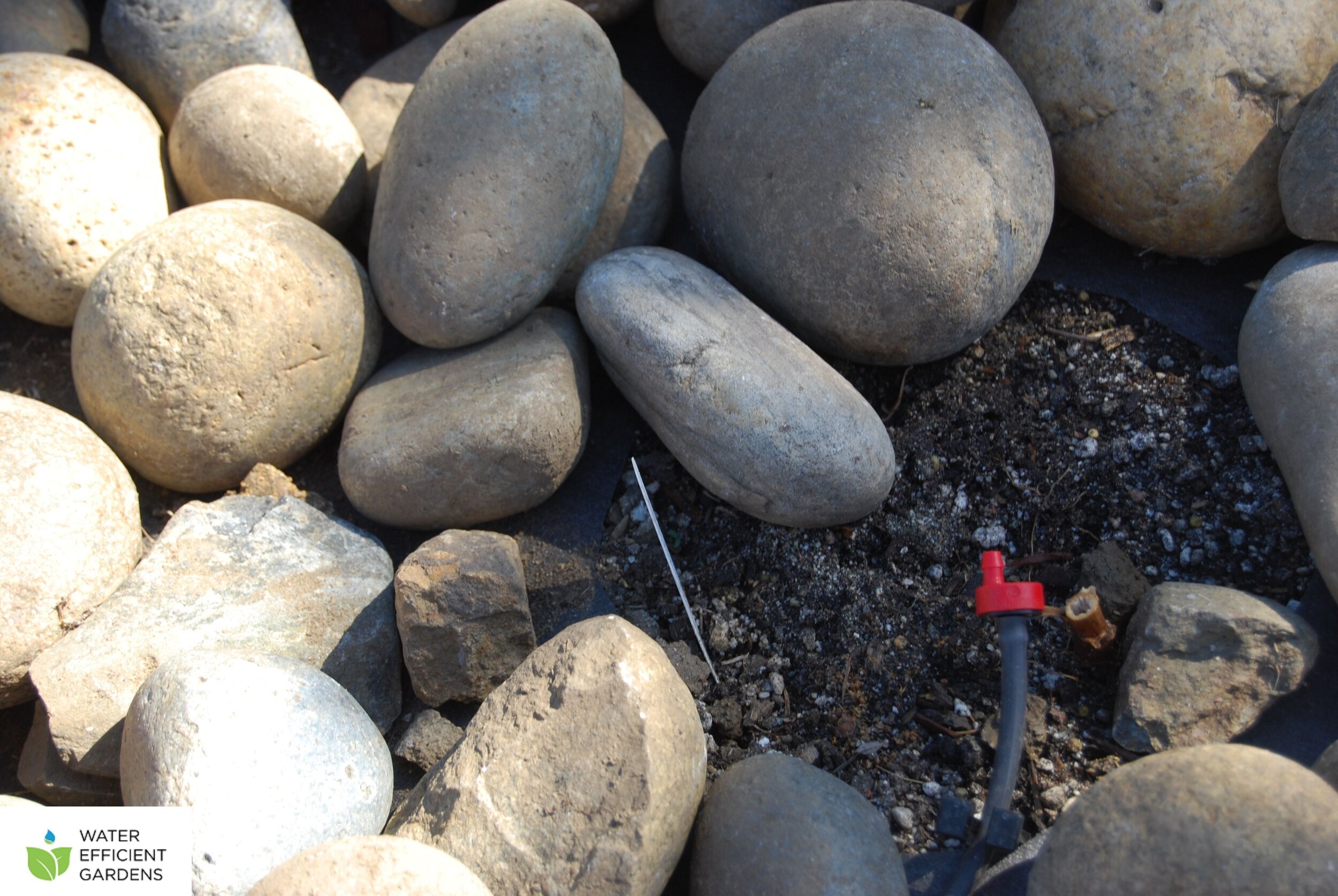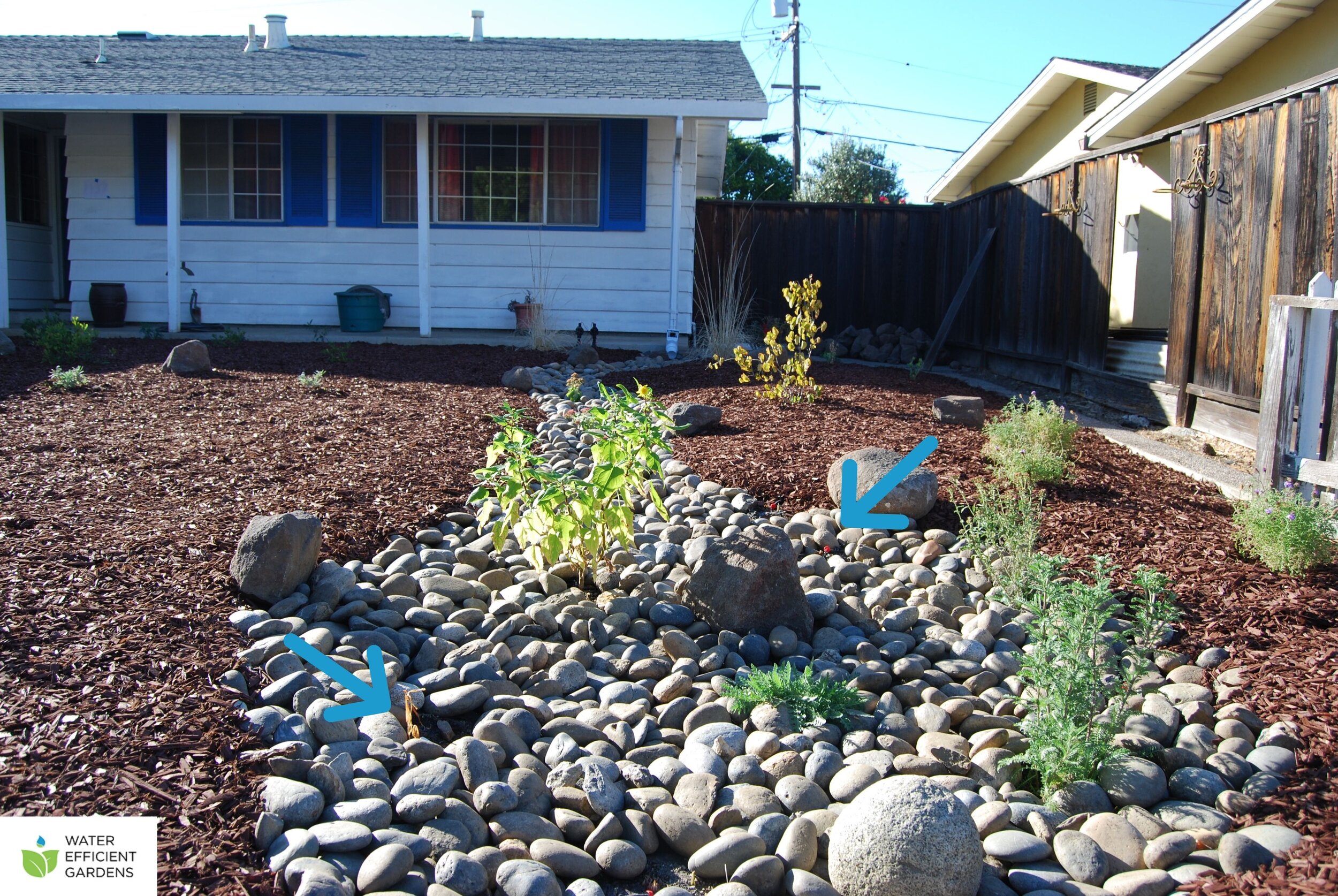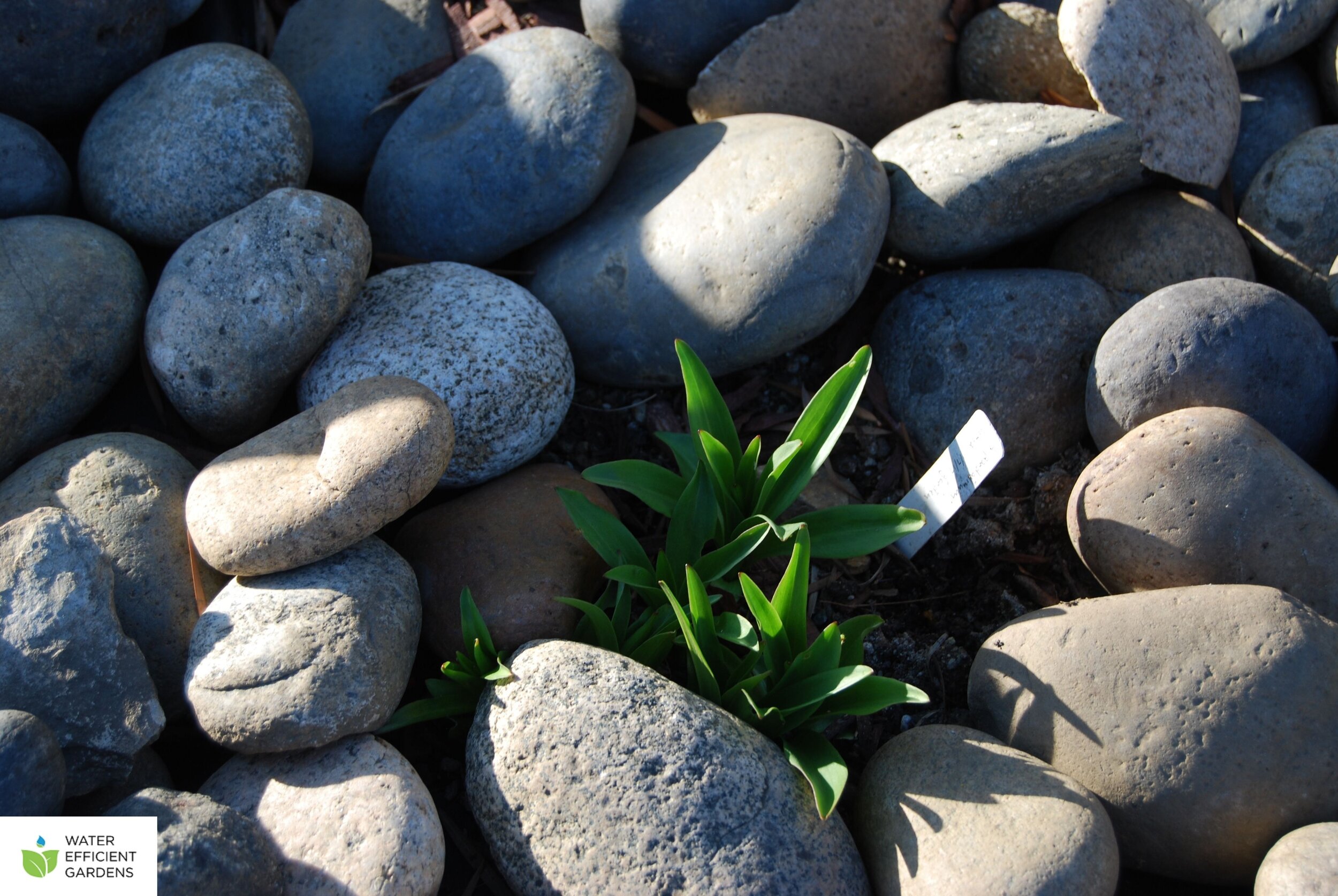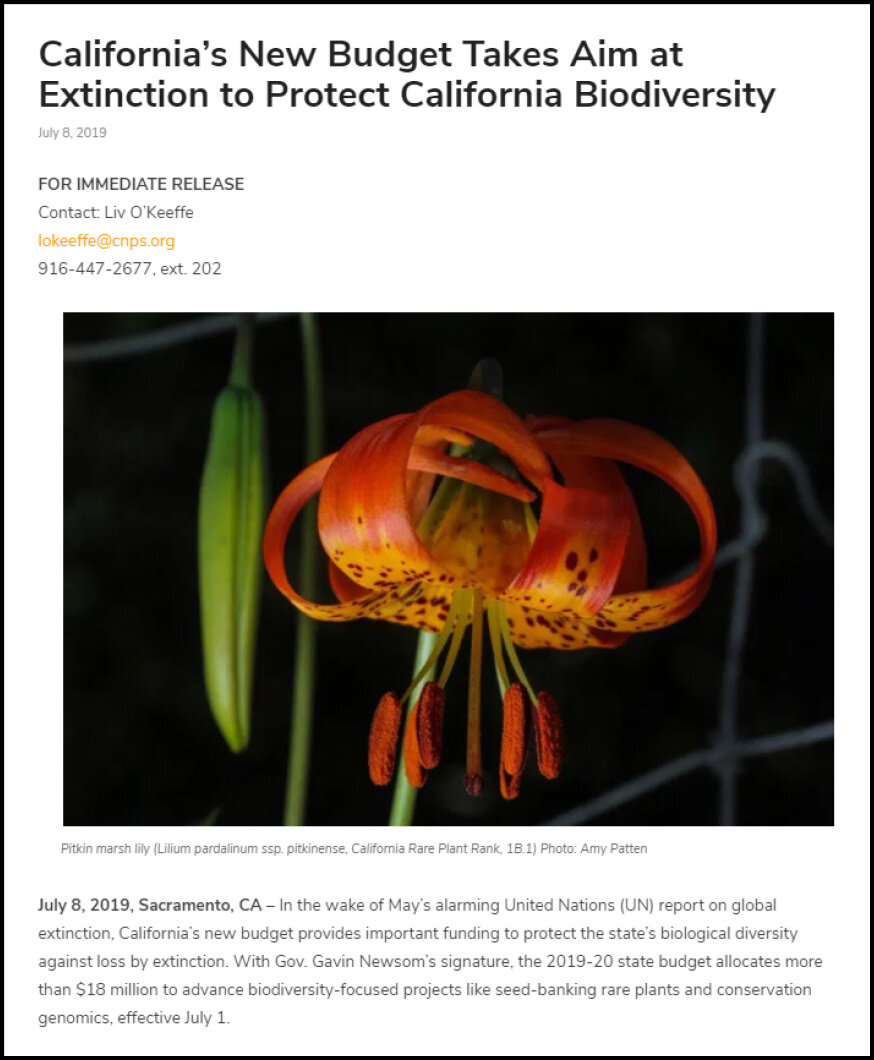Preserving Biodiversity – One Native Garden at a Time
by Shelkie Tao
Water Efficient Gardens
Native gardens can provide so many benefits for us. They are low water, low maintenance, and support a wide variety of wildlife. One important benefit, among all the others, is that it can be a great place to help us preserve biodiversity.
California is a hotspot of biodiversity: it “is home to more species of plants and animals than any other state, and is home to about one-third of all species found in the United States, including more rare plants than most states have plants” (source). However, “More than 30% of California’s species are threatened with extinction” (source).
When I first saw a picture of Lilium pardalinum ssp. pitkinense (the Pitkin Marsh lily) on the internet, I was struck by its unique beauty. It is not something you would see every day. However, I also learned, it is one of those plants that are on the brink of extinction.
Last summer, I did a hike with a group of friends in the Los Angeles mountain area. It was a heavily wooded, lush, green state reserve. We followed the trail for about a mile, after we made a turn, we saw this small stream to our right in the woods. When we went in to take a closer look, we were treated with this gorgeous view (pictured at right).
Last year, when CNPS did its news release for the new state budget to protect the state’s biodiversity against loss by extinction, the cover photo chosen was a Lilium pardalinum ssp. pitkinense, a testament to its beauty and appeal.
“When Pitkin marsh lily was federally listed in 1997, it was known to exist at three occurrences in two marshes in Sonoma County, both of which were privately owned. At the time of the U.S. Fish and Wildlife Service’s 5-Year Review conducted in 2009, only one of these occurrences was confirmed to exist” (source).
It was hard to know how this Pitkin Marsh lily came to be here: naturally or planted by man. One thing was, and is clear, that it needs our help to avoid extinction.
Part of a native garden’s design
It happened that I was designing a native garden at that time. Among all the native plants that I looked at; the Pitkin lily was one of the first I selected. When I explained to the homeowner, she was onboard righ away, feeling proud she did something for the environment.
On installation day, what I got for the lilies were just bulbs, with only tiny brown branches sticking out. “Are they alive?” I wondered out loud. When I was assured that they were, but were in their dormancy, I could only take that hoping they would turn out fine. But I really was quite doubtful. After all, these were plants that faced extinction in nature!
To maximize the chances of success, several bulbs were planted. The garden was installed in mid-fall, and the bulbs remained dormant, until spring. Suddenly, one day, just like that, the green leaves spring out!
Summer Bloom
When summer rolled around, any doubts and worries for the plants were gone. One by one they broke out their signature lantern-like, beautiful, red flowers, contrasting nicely against the yellow and purple native blossoms.
Second Bloom
The summer bloom lasted 2 months, by mid-summer, all the flowers were spent. Well, summer would be over soon. The cycle would start anew. Wait for next year.
However, when I went to visit the garden again in early fall, I could not believe my eyes – they were blooming again! Even more flowers than the first time, and more stunning! While the other blooms had faded by that point, their blossoms were just more striking.
I am so glad that all these Pitkin lilies have been doing so well in the garden, and together with the homeowner, we have done our tiny part in helping preserving California’s biodiversity. If, when we design and build out our new gardens, we can include native plants, especially plants facing extinction like the Pitkin lilies here, not only will we enjoy their unique beauty, but it can go a long way in protecting the wonderful diversity of our ecosystem and keep it thriving.





